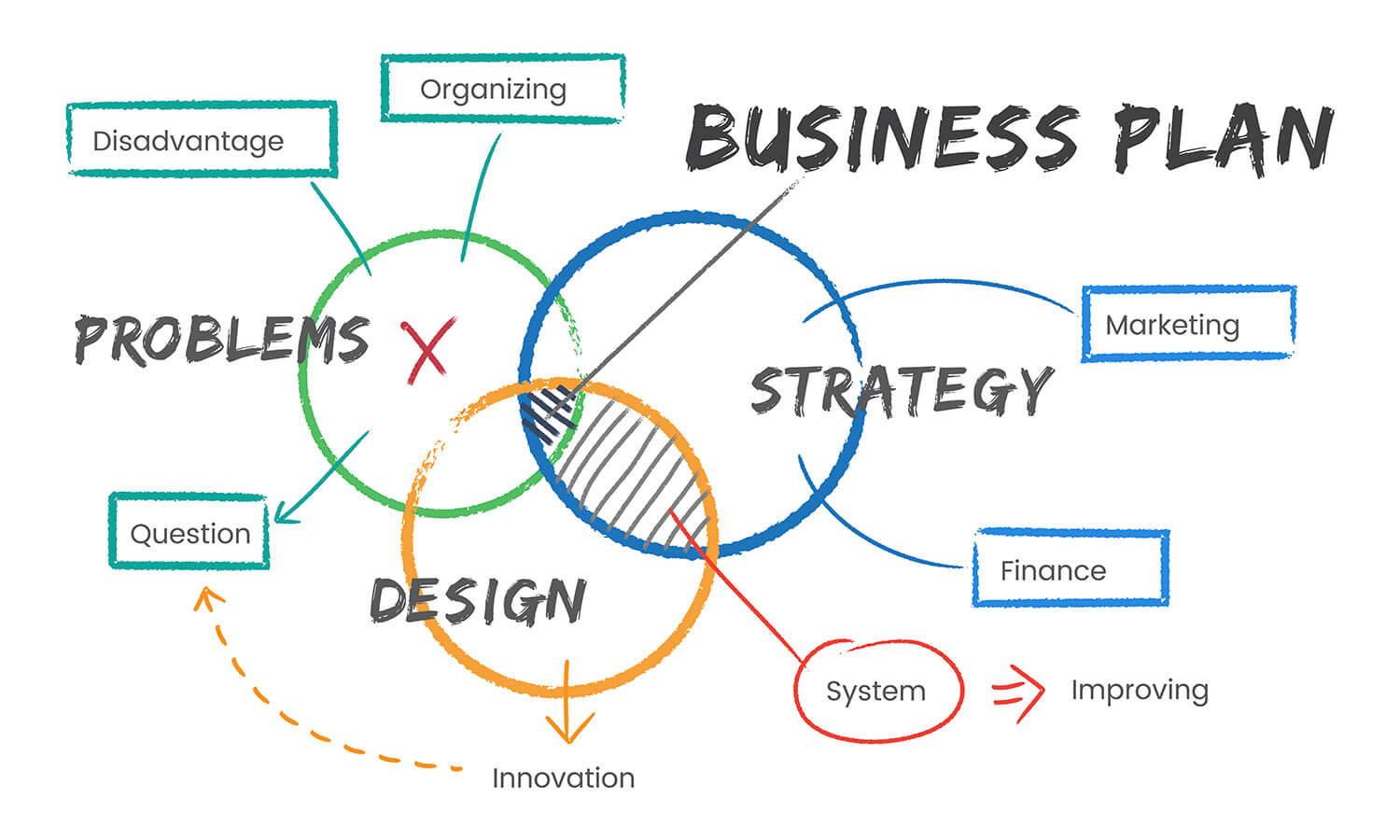Hello World 2
November 7, 2023
Digital transformation is the process of using technology to fundamentally change how a company operates and delivers value to its customers and planning a digital transformation roadmap is crucial for any organization.
It involves rethinking business processes, organizational structures, and customer relationships in order to take advantage of new digital opportunities.
A digital transformation roadmap is a plan that outlines the steps a company will take to achieve its digital transformation goals.
It helps to align stakeholders, prioritize initiatives, and measure progress towards the desired outcomes.
1. Define your goals

Clearly outline what you hope to achieve through digital transformation.
Improving efficiency
Digital transformation roadmap helps streamline processes, saving time and resources, leading to cost savings and increased productivity.
Enhancing customer experience
By using digital technologies to better understand and meet customer needs, organizations can improve the customer experience and drive loyalty.
Increasing competitiveness
Digital transformation can help organizations stay ahead of the competition by adopting new technologies and business models that allow them to offer innovative products and services.
Enabling new revenue streams
Digital transformation can help organizations identify and explore new opportunities for revenue generation, such as by offering new digital products or services.
Improving decision-making
By collecting and analyzing data from various sources, organizations can gain insights that can help them make better informed decisions.
2. Identify your stakeholders

Determine who will be impacted by your digital transformation efforts and involve them in the process.
Stakeholders are individuals or groups who have an interest in or are affected by an organization’s actions. In the context of digital transformation, stakeholders may include:
Employees
Digital transformation can have an impact on the roles, responsibilities, and skills of employees within an organization.
Customers
Digital transformation can affect the products, services, and experiences that an organization offers to its customers.
Suppliers
Digital transformation can change the way that an organization interacts with its suppliers and the products and services they provide.
Investors
Digital transformation can impact the financial performance and future prospects of an organization, which can affect investors.
Regulators
Digital transformation may require organizations to comply with new regulations or standards, which can affect stakeholders such as regulatory bodies.
Local communities
Digital transformation can have an impact on the local community in which an organization operates, such as through the creation of new jobs or the closure of physical locations.
3. Conduct a digital audit
A digital audit is an assessment of an organization’s digital capabilities, resources, and processes.
It can be used as a starting point for digital transformation, helping to identify areas where the organization is strong and areas where there is room for improvement.
Conducting a digital audit can help organizations identify the gaps in their digital capabilities and create a roadmap for improvement.
It can also help to ensure that the organization’s digital transformation efforts are aligned with its overall business goals.
4. Define your target audience

Consider who you are trying to reach and how your digital transformation efforts will benefit them.
To define your target audience, you can consider the following factors:
Demographics:
Consider factors such as age, gender, income, education, and location when identifying your target audience.
Needs and interests
Think about what your target audience is looking for in terms of products, services, or experiences, and how your organization can meet those needs.
Behaviors
Consider the habits and behaviors of your target audience, such as how they prefer to interact with your organization or consume your products or services.
Objectives
Consider the goals or objectives of your target audience, and how your organization can help them achieve those goals.
By defining your target audience, you can better understand their needs and preferences, and develop strategies to effectively reach and engage them through digital channels.
This can help ensure that your digital transformation efforts are successful and deliver value to your organization and its customers.
5. Analyze your competition

Research your competitors and see how they are using digital technologies to their advantage.
By analyzing your competition, you can better understand the market in which you operate and develop strategies to differentiate your organization and achieve a competitive advantage. This can help your digital transformation efforts be more successful.
Identify your competitors
Identify the organizations that you consider to be your main competitors, and consider their size, market share, and the products or services they offer.
Gather information
Collect data on your competitors, including their digital capabilities, marketing strategies, and customer experiences. This may involve conducting online research, attending industry events, or speaking with industry experts.
Analyze their strengths and weaknesses
Use the gathered information to identify the strengths and weaknesses of your competitors, and consider how they compare to your own organization in terms of digital capabilities, customer experience, and other relevant factors.
Identify opportunities for differentiation
Based on your analysis, identify areas where your organization has a competitive advantage or can differentiate itself from its competitors. This may involve focusing on specific customer needs or developing innovative products or services.
6. Identify areas for improvement
Based on your goals and digital audit, identify the areas of your business that will benefit most from digital transformation.
By identifying areas for improvement, organizations can focus their efforts on the areas that will have the greatest impact on their business goals, helping to ensure that their digital transformation efforts are successful.
7. Prioritize your initiatives
Decide which digital transformation initiatives are most important based on their potential impact on your business.
By prioritizing initiatives, organizations can ensure that they are focusing their efforts on the projects that will have the greatest impact on their business goals and that they have the resources and support they need to be successful.
8. Develop a plan

Create a detailed plan outlining how you will implement your digital transformation initiatives.
Creating a plan for digital transformation roadmap can be a complex process, as it involves aligning business goals with technology capabilities and cultural changes
9. Set timelines and milestones
Determine when each initiative will be completed and create deadlines to help keep your efforts on track.
Break each initiative down into smaller, more manageable tasks that can be completed in a specific timeframe.
Estimate how long each task will take to complete, considering factors such as the complexity of the task, the resources and support required, and any dependencies on other tasks.
Based on the estimated time required for each task, create a timeline for completing the initiative, including specific milestones and deadlines.
10. Assign responsibilities
Identify who will be responsible for leading and implementing each initiative.
Consider the skills and expertise required to complete each task, and consider which employees or teams have those skills.
Communicate the assignments to all relevant parties, including employees, management, and other stakeholders.
11. Allocate resources
Determine what resources (financial, technological, etc.) are needed to successfully implement your digital transformation efforts.
Determine the availability of the required resources, including whether they are currently being used for other projects or whether they need to be procured.
12. Develop a budget
Create a budget for your digital transformation roadmap, including any necessary investments in technology or training.
Estimate the cost of each resource, including any one-time or ongoing expenses.
Based on the estimated costs of the resources, develop a budget for each initiative.
13. Create a communication plan
Determine how you will communicate your digital transformation efforts to stakeholders, including employees, customers, and partners.
Based on the communication needs of each stakeholder group, develop a communication plan that outlines how you will share information with them. This could include methods such as email, newsletters, meetings, or social media.
14. Identify potential risks
Consider the potential risks that could impact the completion of each task, including technical issues, resource constraints, or external factors.
Assess the likelihood and impact of each identified risk, considering factors such as the probability of the risk occurring and the potential impact on your business goals.
Develop a risk management plan that outlines how you will mitigate or address the identified risks. This could include contingency plans, risk avoidance strategies, or risk transfer methods.
15. Develop a strategy for measuring success
Determine how you will measure the success of your digital transformation efforts and establish metrics to track progress.
Identify the KPIs that will be most relevant for measuring the success of your initiatives. These could include metrics such as revenue, customer satisfaction, efficiency, or employee engagement.
Set targets for each KPI, outlining the specific level of performance that you hope to achieve.
Determine how you will collect data on your KPIs, including which tools or methods you will use.
By developing a strategy for measuring the success of your digital transformation initiatives, you can track your progress and ensure that you are meeting your goals.
16. Establish a governance model
Determine who will be responsible for making decisions related to digital transformation and how decisions
Based on the decision-making process, develop a governance structure that outlines the roles and responsibilities of each stakeholder group. This could include a steering committee, project teams, or other structures.
Developing and implementing a digital transformation roadmap is an ongoing process that requires careful planning and execution.
It is important to regularly review and adjust the roadmap as needed, based on the progress being made and any changes in the business environment.
By following a well-defined roadmap, a company can successfully navigate the digital landscape and realize the full potential of digital technologies.


